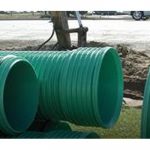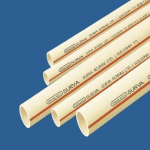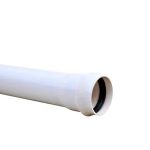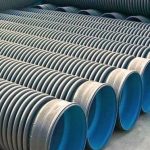The SDR rating scheme for the pipe includes SDR 11 and SDR 17. At a 100°F operating temperature, SDR 11 provides a pressure rating of 126psi vs SDR 17, which has a pressure rating of 79 psi.
The SDR (standard dimension ratio) is a rating system for pressure pipes. A rise in the SDR number corresponds to a fall in pressure rating. While S is the pipe wall thickness in mm or in, D stands for outer pipe diameter (mm, in). SDR provides high tensile and impact strength.
In this article, you will learn about SDR-11 and SDR-17 and compare each pipe’s properties.
SDR 11
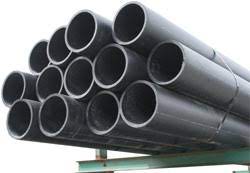
While not considered pressure rated pipe, SDR nonetheless provides one of the more robust strengths in the SDR pipe family. The outside diameter is 11 times the wall thickness, as indicated by “11”.
SDR 11 pipe fashions from HDPE, ABS, PVC, CPVC, and other materials. Usually, the SDR 11 line transports low-pressure fluids.
SDR 17 Overview
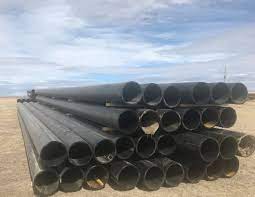
SDR 17 pipe is an outstanding choice for chemical & fertilizer transfer. It is lightweight, flexible, chemical, and abrasion-resistant. This pipe won’t rot, rust, corrode, or crack, unlike other pipe items. Also, it is resistant to agriculture chemicals and acids.
SDR 17 pipe is available in 2 inner-wall forms: smooth and ribbed. It also includes additives such as UV stabilization and friction-reducing additives as per customer requirements and project specifications.
Examples such as SDR 13.5, SDR 21, SDR 26, and SDR 32.5 are some of the more robust pipes in the SDR family. SDR 41 and SDR 64 provide lower strength.
SDR 11 vs SDR 17 Pipe Properties
Material Type
Usually, both SDR 11 and SDR 17 are made from polyvinyl chloride (PVC). PVC is a thermoplastic substance with great strength. Wire and cable insulation, pipelines, and medical equipment use this kind of material frequently. In fact, it ranks third among synthetic plastic polymers in terms of global production.
PVC can’t withstand extreme heat, despite these benefits. It also degrades when exposed to short wave UV light (contained in sunlight). Due to these concerns, PVC may leach chemicals into the water or air. As a result, PVC is not approved for these applications. .
The other common material type for SDR 11 and SDR 17 is HDPE (high-density polyethylene). HDPE provides a lower failure rate than PVC and does not have the same degradation issues as PVC.
Wall Thickness
The following table compares the wall thickness of the SDR 35 and SDR 26 for various sizes:
| Sizes | Nominal OD | SDR 11 Wall Thickness | SDR 17 Wall Thickness |
| 1” | 1.315” | 0.119” | 0.077” |
| 1 ¼” | 1.660” | 0.151” | 0.098” |
| 1 ½” | 1.900” | 0.173” | 0.112” |
| 2” | 2.375” | 0.216” | 0.140” |
| 3” | 3.500” | 0.318” | 0.206” |
SDR 11 wall thickness ranges from 0.119 to 0.318 inches, depending on the pipe size. The strength of SDR 11 is higher than SDR 17. SDR 17 sizes range from 0.077 inches to 0.205 inches in pipe diameters of 1 – 3 inches.
Corrosion Resistance
SDR 11 and SDR 17 do not experience any corrosion from dirt or water because they are generally constructed of PVC or HDPE. These materials provide unique physical properties that protect it from rusting and chemical attacks from various substances, including acids, alkalies, salt solutions, and others. However, these materials swiftly break down by polar solvents like ketones and aromatics.
Despite these drawbacks, PVC and HDPE provide energy efficiency, light weight, and are leak-free. This leads them to be favored over conventional metal pipes, which are bulky and more prone to cracking.
Flexibility Strength
Since PVC pipe can deflect by at least 2 percent without breaking or cracking, it is a flexible conduit. PVC pipes can be put at more than 50 feet burial depths due to their flexibility. In these installs, SDR’s adaptability is superior to Schedule 40’s durability. Under the weight of the fill material, SDR flexes as the world moves and settles. As a result, the SDR design has a higher flex tolerance and produces fewer breaks.
HDPE is also flexible and bends in a circle that is 25 times the size of the pipe’s nominal diameter. This allows for directional changes, fewer fittings, thrust blocks, and restraints. Flexibility, chemical stability, and a high strength-to-density ratio are all characteristics of HDPE. Furthermore, it provides a leak-free system via heat fusion joints.
